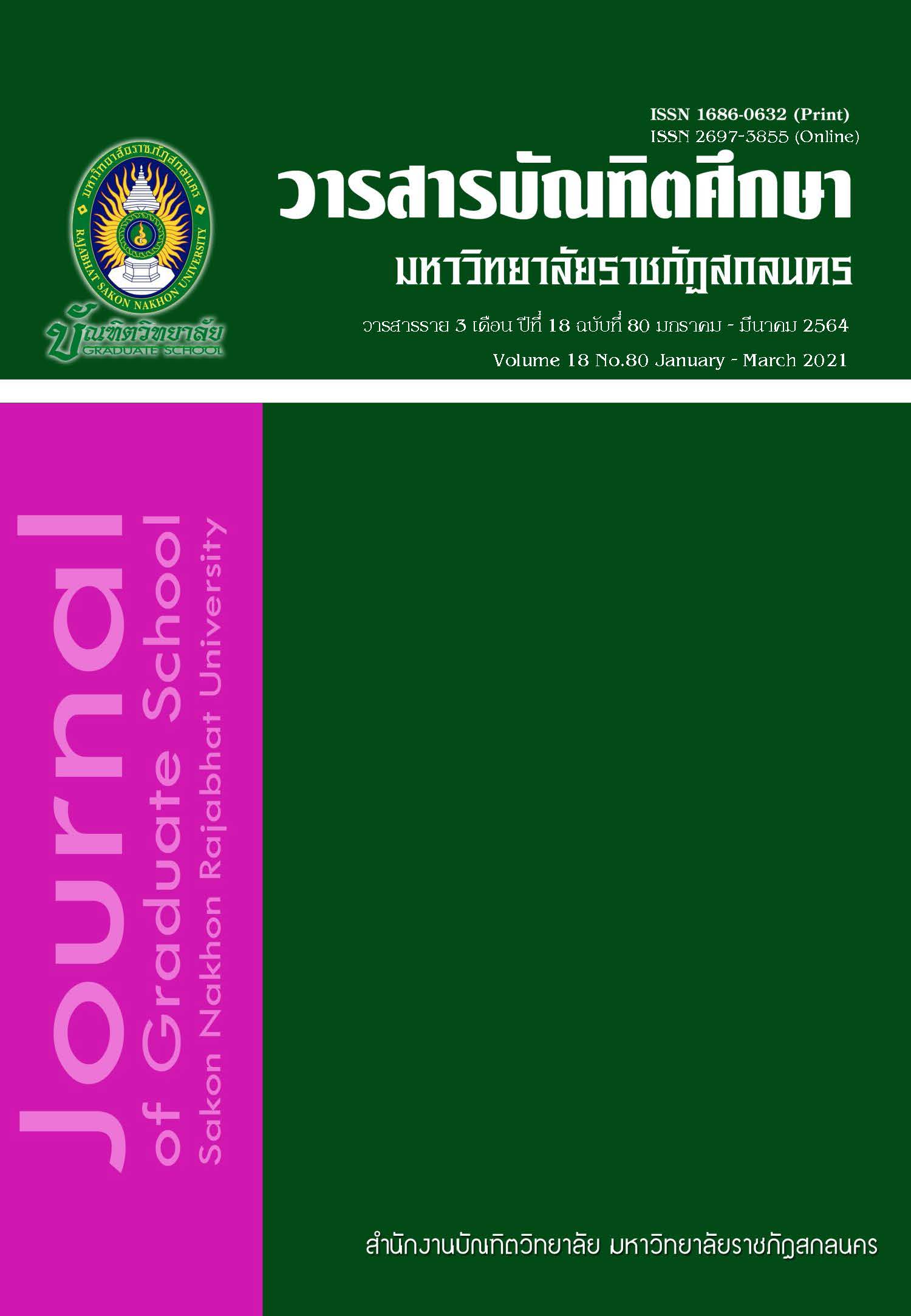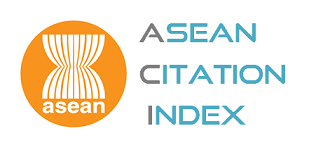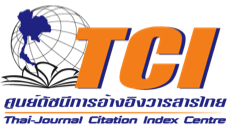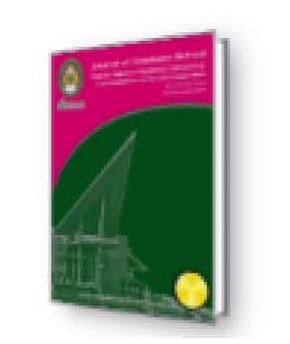การพัฒนาบทเรียนออนไลน์โดยผสมผสานแนวคิดบทเรียนแสวงรู้บนเว็บ (WebQuest) ร่วมกับห้องเรียนกลับด้าน (Flipped Classroom) เพื่อพัฒนาทักษะดนตรี (การเป่าขลุ่ยเพียงออ) สำหรับนักเรียนชั้นมัธยมศึกษาปีที่ 2
Keywords:
WebQuest, Flipped Classroom, Musical SkillsAbstract
The purposes of this Research and Development were to; 1) develop online lessons by combining the concept of WebQuest with flipped classroom for developing music skills (flute playing) for Mathayomsuksa 2 students, 2) compare the students’ learning achievement scores after the intervention, 3) examine the development of students’ music skills after the intervention, and 4) investigate the student satisfaction toward with the developed lessons. The sample, obtained through cluster random sampling, consisted of 18 Mathayomsuksa 2 students from Watlaemchabang school. The research instruments included: 1) online lessons based on the concept of the WebQuest with flipped classroom, 2) an expert evaluation form,3) an achievement test, 4) a form of music skill assessment, 5) a student satisfaction form.
The findings revealed that: 1) The developed online lessons achieved the mean score of 4.56 which was at a high level overall, 2) the post-intervention scores of student learning achievement were higher than those of before the intervention with a statistical significance of .01 level, 3) The students demonstrated progress in musical skills at a very good level overall with a mean score of 49.73 (49.73 percent), and 4) The student satisfaction toward the developed online lessons was at a high level overall with a mean score of 4.35.
References
ชนิสรา เมธภัทรหิรัญ. (2560). ห้องเรียนกลับด้าน (Flipped Classroom) กับการสอนคณิตศาสตร์. สสวท, 46(209), 20-22.
ชิญนารถ ขยายวงศ์. (2558). การพัฒนาบทเรียนแสวงรู้บนเว็บที่ส่งเสริมความสามารถในการคิดอย่างมีวิจารณญาณ เรื่องกฎหมายใกล้ตัวสำหรับนักเรียนชั้นมัธยมศึกษาปีที่ 1. วารสาริชาการการจัดการเทคโนโลยีสารสนเทศและนวัตกรรม, 2(2), 80-89.
นวพัฒน์ เก็มกาแมน. (2558). ผลของการจัดการเรียนรู้แบบห้องเรียนกลับด้านด้วยบทเรียนอิเล็กทรอนิกส์ ที่มีต่อผลสัมฤทธิ์ทางการเรียน วิชาเทคโนโลยีสารสนเทศ 2 ของนักเรียนชั้นมัธยมศึกษาปีที่ 4. วิทยานิพนธ์ วศ.ม. กรุงเทพฯ: สถาบันเทคโนโลยีพระจอมเกล้าเจ้าคุณทหารลาดกระบัง.
นิตยา ดกกลาง. (2560). การพัฒนาบทเรียนคอมพิวเตอร์ช่วยสอน วิชาการออกแบบและพัฒนาโปรแกรม ระดับประกาศนียบัตรวิชาชีพชั้นสูง โดยใช้วิธีการสอนแบบห้องเรียนกลับด้าน. วิทยานิพนธ์ ค.อ.ม. กรุงเทพฯ: มหาวิทยาลัยเทคโนโลยีพระจอมเกล้าพระนครเหนือ.
นิลรำไพ ภัทรนนท์. (2553). การพัฒนาบทเรียนแสวงรู้บนเว็บเพื่อส่งเสริมการคิดอย่างมีวิจารณญาณ สำหรับนักเรียนชั้นมัธยมศึกษาปีที่ 5. วารสารศึกษาศาสตร์มหาวิทยาลัยนเรศวร, 12(2), 95-110.
ลัลน์ลลิต เอี่ยมอำนวยสุข. (2556). การสร้างสื่อบนอุปกรณ์คอมพิวเตอร์พกพา เรื่อง การเคลื่อนไหวในระบบดิจิตอลเบื้องต้นที่ใช้วิธีการสอนแบบห้องเรียนกลับด้าน. วิทยานิพนธ์ ค.อ.ม. กรุงเทพฯ: มหาวิทยาลัยเทคโนโลยีพระจอมเกล้าธนบุรี
วสันต์ อติศัพท์. (2546). WebQuest: การเรียนที่เน้นผู้เรียนเป็นศูนย์กลางบน World Wide Web. วิทยบริการ, 14(2), 52-61.
วีณา ประชากูล และประสาท เนืองเฉลิม. (2553). รูปแบบการเรียนการสอน. มหาสารคาม: มหาวิทยาลัยมหาสารคาม.
สำนักงานคณะกรรมการการศึกษาขั้นพื้นฐาน กระทรวงศึกษาธิการ. (2562). หลักสูตรสถานศึกษา กลุ่มสาระการเรียนรู้ศิลปะ. ชลบุรี: โรงเรียนวัดแหลมฉบัง.
สุรศักดิ์ ปาเฮ. (2556). ห้องเรียนกลับทางและห้องเรียนมิติใหม่ในศตวรรษที่ 21. เข้าถึงได้จาก https://drive.google.com/file/d/0B-vwGdKHpn3WVGNzUUs2MWNjX1U/view. 24 ธันวาคม 2561.
อนุศร หงส์ขุนทด. (2558). การพัฒนารูปแบบระบบการเรียนแบบห้องเรียนกลับด้านผ่านสื่อ 3 แบบ ด้านทักษะดนตรีสำหรับนักเรียนชั้นมัธยมศึกษา. วิทยานิพนธ์ ปร.ด. กรุงเทพฯ: มหาวิทยาลัยเกษตรศาสตร์.
Bergman, J., & Sams, A. (2012). Flip your classroom. Retrieved from https://www.liceopalmieri.gov.it/wp- content/uploads/2016/11/Flip-Your-Classroom.pdf. October 14th, 2018.
Tucker, M. D. (2013). Investigating the efficacy of a Flipped science classroom. Master Thesis of Science, United Stated: Montana State University.
Downloads
Published
How to Cite
Issue
Section
License
บทความทุกบทความที่ตีพิมพ์ในวารสารบัณฑิตศึกษา มหาวิทยาลัยราชภัฏสกลนคร ถือว่าเป็นลิขสิทธิ์ของบัณฑิตวิทยาลัย มหาวิทยาลัยราชภัฏสกลนคร










